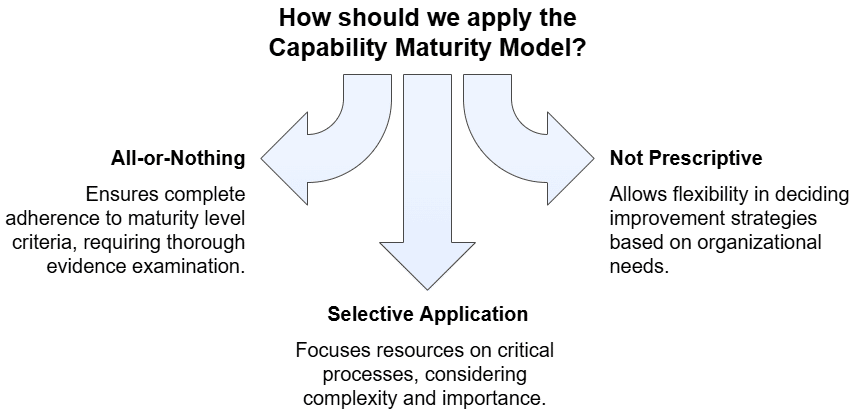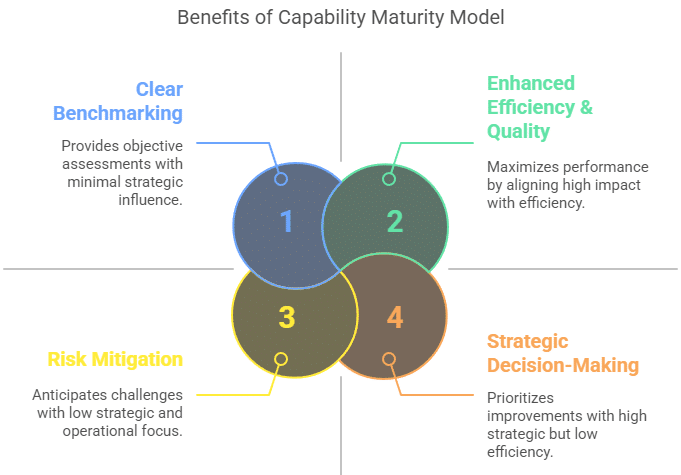What is the Capability Maturity Model (CMM)?
The Capability Maturity Model (CMM) is a structured framework that helps organizations assess and improve the maturity of their processes. Originally developed by the Carnegie Mellon Software Engineering Institute, CMM is widely applicable across industries, guiding businesses from ad hoc operations to disciplined, continuously improving processes.
CMM categorizes process maturity into five distinct levels:
Initial (Ad hoc/chaotic)
Repeatable
Defined
Managed
Optimizing
CMM Levels and Their Characteristics
| Level | What It Is | Key Characteristics | Focus for Improvement |
|---|---|---|---|
| 5. Optimizing | Continuous improvement through innovation and analytics | A culture of continuous improvement is embedded. Innovation, process refinement, and proactive problem-solving drive competitive advantage. | Systematically introduce, test, and scale process changes for maximum impact. |
| 4. Managed | Processes measured, monitored, and optimized for efficiency | Data-driven decision-making, measurable performance indicators, and risk management through analytics. | Optimize efficiency, reduce waste, and ensure consistent quality. |
| 3. Defined | Standardized and documented processes across the organization | Processes are well-documented and standardized. Employees receive formal training, and roles and responsibilities are clearly outlined. | Integrate processes, policies, and systems for consistency and accountability. |
| 2. Repeatable | Basic processes established, but still reliant on individuals | Standard processes start to emerge, supported by documentation and basic policies. Managers set objectives, train employees, and track performance. | Stabilize processes for consistent repetition across teams. |
| 1. Initial (Ad hoc/chaotic) | Unstructured, reactive processes | Processes are inconsistent, reactive, and heavily reliant on individual efforts. Crisis management is common, and documentation is minimal. | Introduce basic structure and repeatability. |
Key Principles of CMM Implementation

All-or-Nothing at Each Level
A process either meets all the criteria for a given maturity level or it does not. There are no “plus” or “minus” ratings.
Evaluation requires examining evidence (facts) about the current state of the process.
Not Prescriptive
The CMM does not tell you how to improve; it simply indicates where you are and where you could go next.
Management decides which processes need to reach which levels, based on cost, time, and strategic importance.
Selective Application
Not every process needs to strive for the highest level (Managed or Optimizing).
The maturity level pursued depends on how important the process is, how complex it is, and what resources are available.
How CMM Benefits Organizations

Final Thoughts
The Capability Maturity Model (CMM) is not just a framework—it’s a roadmap for organizations looking to enhance their operational effectiveness. By understanding their current maturity level and strategically advancing, businesses can build resilient, scalable, and high-performing processes.
At Kreston OPR, we help businesses assess and optimize their processes using structured frameworks like CMM. Whether you’re looking to standardize workflows or achieve continuous innovation, our expert guidance ensures a strategic, results-driven approach. Let’s start the conversation.